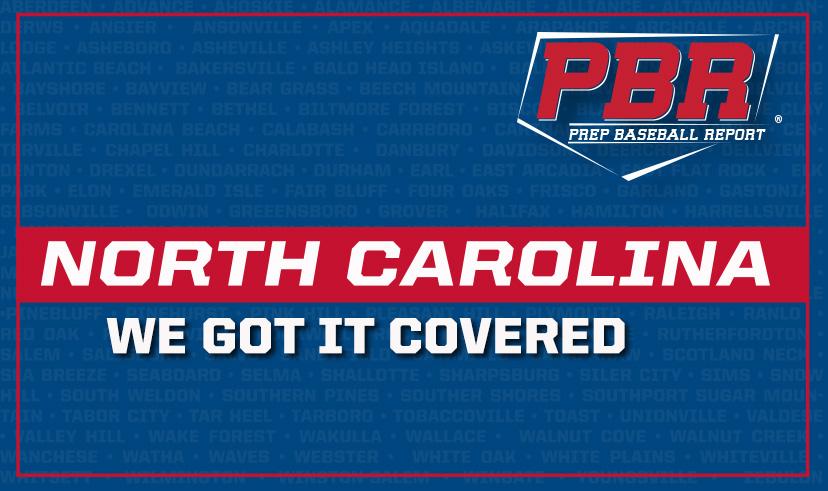NC Insider: Coaches Look at the New Pitch Count Regulations
December 12, 2016
By Brandon Hall
Director of Scouting, PBR NC
Follow us on Twitter: @PrepBaseballNC

High school coaches from across North Carolina convened in Greensboro, NC on Dec. 2-3 as part of the North Carolina Baseball Coaches Association (NCBCA) annual meetings. These meetings allow the coaches to get together, share ideas, honor the year’s award recipients, and go over any rule changes or points of emphasis. The big talk from this year’s convention was the introduction of the USA Baseball/Major League Baseball Pitch Smart rules for tracking pitch counts and eligibility of pitchers.
The Pitch Smart rules will be enforced during the 2017 North Carolina high school baseball season. Prep Baseball Report was able to conduct a poll with the coaches within North Carolina to gauge their thoughts and concerns on the new pitching rules. First, we look at the evolution of the Pitch Smart rules and their implementation within the state.
USA Baseball/MLB Pitch Smart
In November 2014, USA Baseball and MLB launched Pitch Smart. The initiative is designed to, “provide a comprehensive resource for safe pitching practices, offering a series of practical, age-appropriate guidelines to help players, parents, and coaches avoid overuse injuries and foster long healthy careers.” The guidelines offer pitch count and rest recommendations, while also educating the baseball public on Tommy John surgery, risk factors and awareness tips. The advisory committee, put together by USA Baseball and MLB, consisted of 11 doctors and one head trainer. Each doctor or trainer worked directly with a major league team, the MLB Players’ Association, or USA Baseball.
The most recent nationwide study of youth pitchers found that many were still taking risks with their arms and bodies. According to MLB Pitch Smart:
-
45% pitched in a league without pitch counts or limits
-
43.5% pitched on consecutive days
-
30.4% pitched on multiple teams with overlapping seasons
-
19% pitched in multiple games on the same day
-
13.2% pitched competitive baseball for more than eight months per year
The committee built a series of plans, based on age, for pitchers to follow. For each age range, there is a maximum number of pitches for any one day. The table also relates the number of pitches thrown to a prescribed number of days of rest. Below is the Pitch Smart Pitching Guidelines for ages 17-18. These are the guidelines the NCBCA and North Carolina High School Athletic Association (NCHSAA) have put into place for North Carolina high school baseball in the spring of 2017.
-
105 pitches (in game) is the daily max
-
1-30 pitches requires 0 days of rest to pitch again
-
31-45 pitches requires 1 day of rest to pitch again
-
45-60 pitches requires 2 days of rest to pitch again
-
61-75 pitches requires 3 days of rest to pitch again
-
More than 76 pitches requires 4 days of rest to pitch again
Source: http://m.mlb.com/pitchsmart/
Pitch Count Regulation in North Carolina
The NCHSA approved the implementation of pitch counts for the 2017 season. Pitch counts were coming as the National Federation of High Schools announced in June it would be requiring all of its associations to adopt pitch count rules. The NCHSAA is a member of the National Federation.
With the rules coming, the NCBCA worked to get ahead of the curve. Working with the NCHSAA and the Sports Medicine Advisory Committee, the NCBCA submitted its thoughts on pitch counts during the regular season and postseason, and how to track and monitor the pitchers. Ultimately, the USA Baseball/MLB Pitch Smart rules for players 17-18 years old was selected for regular season use. The rules will be altered slightly during the North Carolina State Championship series, as these games could line up to be three games in two days.
Hal Bagwell, head coach at Ardrey Kell HS and president of the NCBCA talked about the process of implementing the new regulations.
“The process took three months. The NCHSAA contacted me when the NFHS mandate came down and asked us to develop a plan. We developed a timeline and committee consisting of our board of directors, our regional directors, athletic trainers and doctors. There were 25 people on the committee. I also collaborated with several other states to gage what they we doing and how they were doing it. The NCBCA took ownership of the mandate and came up with, what we consider, a very sound plan…. All of the coaches around the state who provided insight and information. It truly was a group proposal.”
In order to monitor the pitch counts, the home team will be designated as the official pitch count keeper. The home team’s designated person, or scorekeeper, should work with a designee from the visiting team to assure the counts are kept correctly. As teams report their scores, they will be reporting the pitch counts from each game.
Bagwell added, “The NCHSAA decided to use the basketball model, which designates the home team as the official book. Ultimately, there will be a check-and-balance system used throughout the game to ensure accuracy. The NCHSAA will also enforce the rule. We are currently working with them to development a common form(s) that will be used to collect the data/number of pitches during a game. In my communication with them, as we know right now, we will be using Max Preps to enter each player and his pitch count, per game.”
Surveying the Coaches of North Carolina
Prep Baseball Report contacted 125 high school coaches in North Carolina. The coaches were selected at random, making sure to have coaches from each of the eight regions and each of the four classifications represented. More than 70 coaches responded and filled out the short questionnaire to gauge the reaction of the state’s coaches to the new Pitch Smart regulations.
Coaches were asked 10 questions, ranging from how pitchers across the state have been used and treated in the past, to how the new regulations will affect competitive balance within the state. The coaches that responded were able to leave comments within the questionnaire as well. The entire questionnaire and comment section were left anonymous to encourage coaches to speak their mind.
Two responses from the coaches stood out when looking at the poll results. When asked should their pitchers follow the Pitch Smart guidelines year round, 72.2 percent of the coaches polled responded they agreed or strongly agreed. When asked would the Pitch Smart guidelines have an effect on their pitchers’ health, 65.7 percent responded in the affirmative.
Coaches are concerned with their pitchers’ health. Some believe the new regulations may not cover their guys as they are playing with teams in the fall and in the summer. Several left comments concerning these two questions.
“I feel as though it's a smart move, however anyone who cares about their guys have had their own protocol all along… What the state should look into is limiting the amount of games a kid should be playing in a year. One hundred plus games for a 14-year-old is crazy. "Travel ball" has killed local leagues and made kids numb to winning and losing. They're less competitive, look for that all important participation trophy, get told they are Division I material by money craving organizations and "scouts", while all the while tearing up their arms year around without rest. So while some high school coaches are a fault for abusing their best arms, I feel as a baseball community there are plenty of other areas that should be explored for our kids safety.”
“While it is a necessary step at the high school level, the legislation will do nothing to help combat the injuries in amateur athletes unless it is adopted and enforced at the travel/showcase level as well.”
“AAU Baseball should adopt similar rules as well particularly for kids at a younger age. Most high school coaches are already following these rules or at least close to them but our kids are playing on two to three teams at a time between ages 8-15 and that's a problem. On those teams if you are a pitcher, they all want you to pitch. Our arms only have so many throws in them before they are worn out.”
“I like the attempt to make a change by placing restrictions on pitchers; however, I think we all realize that what the athletes are doing on the weekends all summer through fall has a much more profound impact on the health and well-being of the athlete's arm than anything the average high school coach is asking of these athletes.”
“Overall, the Pitch Smart Rules are a positive addition. The downside is what could possibly happen over the summer and with travel ball where there are not any limitations in place. I have coached high school for three years, I do not believe that I exceeded 110 pitches with any pitcher and adhered to a rest system that was very similar to Pitch Smart.”
The coaches surveyed did have their eye on the competitive balance and the ability to manage games. When asked about the Pitch Smart regulations being fair to all teams, 35 percent agreed or strongly agreed, while 38 percent disagreed or strongly disagreed. When asked about competitive balance, 40 percent of the coaches surveyed felt fewer schools would be able to compete at a high level due to the new rule. Several coaches commented specifically about smaller classification schools, whose pure numbers may put them at a disadvantage.
“I like the regulations. It is our No. 1 goal to take care of our athletes. On the other hand lesser teams will have to throw more pitches which is obvious... For the past four years I have coached in a split 3A-4A while being the smallest 3A school in NC. This taxes a pitching staff especially when your district requires you to play 4A schools within your district even for non-conference games.”
“The biggest difference for me (that will possibly hurt my small 1A team), is that I may have to pull JV kids up in situations where I might not in the past for a "just in case" scenario. I just have to plan ahead for the possibility of a bad start where a kid throws a high number of pitches in the first and second inning. This could lead to not having enough pitchers/players to have a JV game (mainly when we have three games in one week). I have told my prospective team that now we need at least 16 players to have a JV team, where I only had 11 last year. Basically, this rule might cause me not to have the ability to have a JV program. In the future, I will drastically reduce the number of three game weeks that I make in my schedule.”
“Big schools are not as affected by this rule as your 1A-2A programs are. And because I will have to use more position guys to pitch this year there will be a greater chance of injury for one of those guys. Example:- Starting shortstop pitches conference tournament game on Tuesday (I have to keep him in as long as I can because if I don't he is done for next two to three days), and has to play SS on Wednesday. My SS has a greater chance of injuring his arm because of strain and repeated plays he makes Wednesday.”
“Schools at the small 1A level are again put at a huge disadvantage because they do not have the players or the arms to compete with this legislation. I totally agree with weekly limitations on pitching but this legislation is absurd. I coach at a 1A school with less than 300 students and there is no way I can compete with 1A schools with 600 students with this legislation.”
The coaches in North Carolina seem to be accepting of the Pitch Smart Regulations. There are still questions on how the rules will be implemented and tracked. There are still questions about how the pitch count ordinance will grow and mature over time.
“It is good for baseball.”
“Now if we would go to threegame series in conference, we have something.”
“I think it is smart and good for the well-being of the players.”
“I wish the limits were about five to 10 pitches more”
“The accountability piece of the rule is a joke. The home book is the official count? There needs to be an independent counter.”
“Umpire in the field should count pitches, not the home team. Umpire in the field could cross-check with the home team scorebook at the end of each half inning.”
“NCBCA did their homework/research, got feedback from membership, and presented a plan. It was submitted and rejected. Accountability is still a question. This is a process.”
This is a process and the NCBCA understands the process is ongoing and will be evaluated and revised. Bagwell spoke about the process and the NCBCA communication with its coaches.
“I have already told the NCHSAA and the NCHSAA board of directors that we will submit a revised plan after the 2017 season. They support this idea. We are going to continue to work with the NCHSAA for guidance and will communicate with them throughout. They have been very supportive in listening to our ideas and concerns. We will provide them with the support necessary to ensure our coaches understand the plan and what is expected. “
Full Prep Baseball Report Poll with North Carolina High School Coaches
CLICK HERE for the full results from the Prep Baseball Report poll of North Carolina high school coaches.


